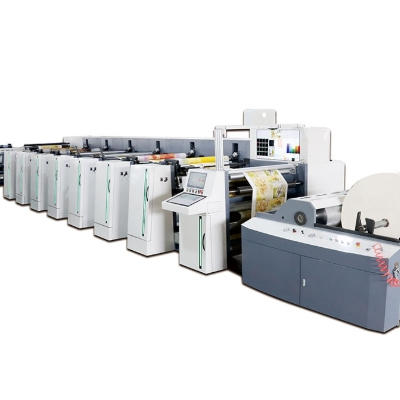Next: Flexo Printing Machine Buying Guide: A Must-Read for Newcomers
Flexographic printing is widely used in many fields and plays an important role. Under market competition, the price of printing machines has become a focus, which is related to investment and benefits. Exploring the factors affecting price can help printing companies select equipment, control costs, and optimize planning, allowing investors to understand the situation, grasp the logic, and seize the initiative. This article analyzes the factors affecting the price of flexographic printing machines, which will provide in-depth and valuable reference for the printing industry and its followers.
I. Printing Format: The Larger the Size, the Higher the Price
The printing format significantly affects the price of flexographic printing machines. A larger format demands enhanced mechanical structure stability and expandability, leading to increased manufacturing costs. For instance, a small A4-format machine might cost tens of thousands, while an extra-large format one could exceed a million yuan.
II. Printing Speed: High Efficiency in Production, with Added Costs
Printing speed is crucial. High-speed machines need a powerful power system, precise transmission, and advanced control. Their R&D and component costs raise the price. An ordinary-speed machine may cost far less than a high-speed counterpart, with a price difference potentially reaching hundreds of thousands of yuan.
III. Printing Precision: Precise Reproduction, with a Rising Value
Printing precision is a key quality indicator. High-precision requires advanced components like precise plate cylinders, ink supply, and tension control systems. These increase the price. Compared to ordinary-precision, a high-precision machine's price might be 30% - 50% higher.
IV. Degree of Automation: Intelligent Operation, with a Rising Price
Automation level matters. Automated functions reduce labor but demand costly R&D and components. A machine with low automation may be 20% - 40% cheaper than a fully automated one.
V. Brand Factor: Reputation Boost, with Obvious Premium
Brands are important. Renowned ones have advanced tech, reliable quality, and good service. Their R&D and quality control efforts lead to a 30% - 60% price premium over ordinary brands.
VI. Material and Craftsmanship: High-Quality Material Selection, with Added Value from Craftsmanship
Material and craftsmanship impact the price. High-quality steel and advanced manufacturing like precision machining enhance durability. These raise the manufacturing cost and thus the price.

GET A QUOTE